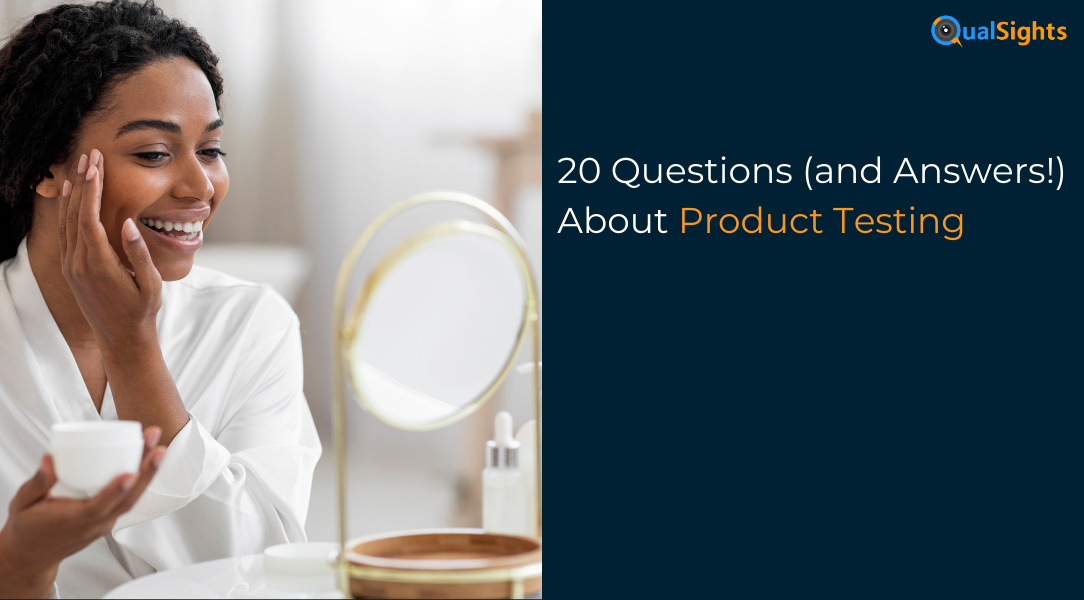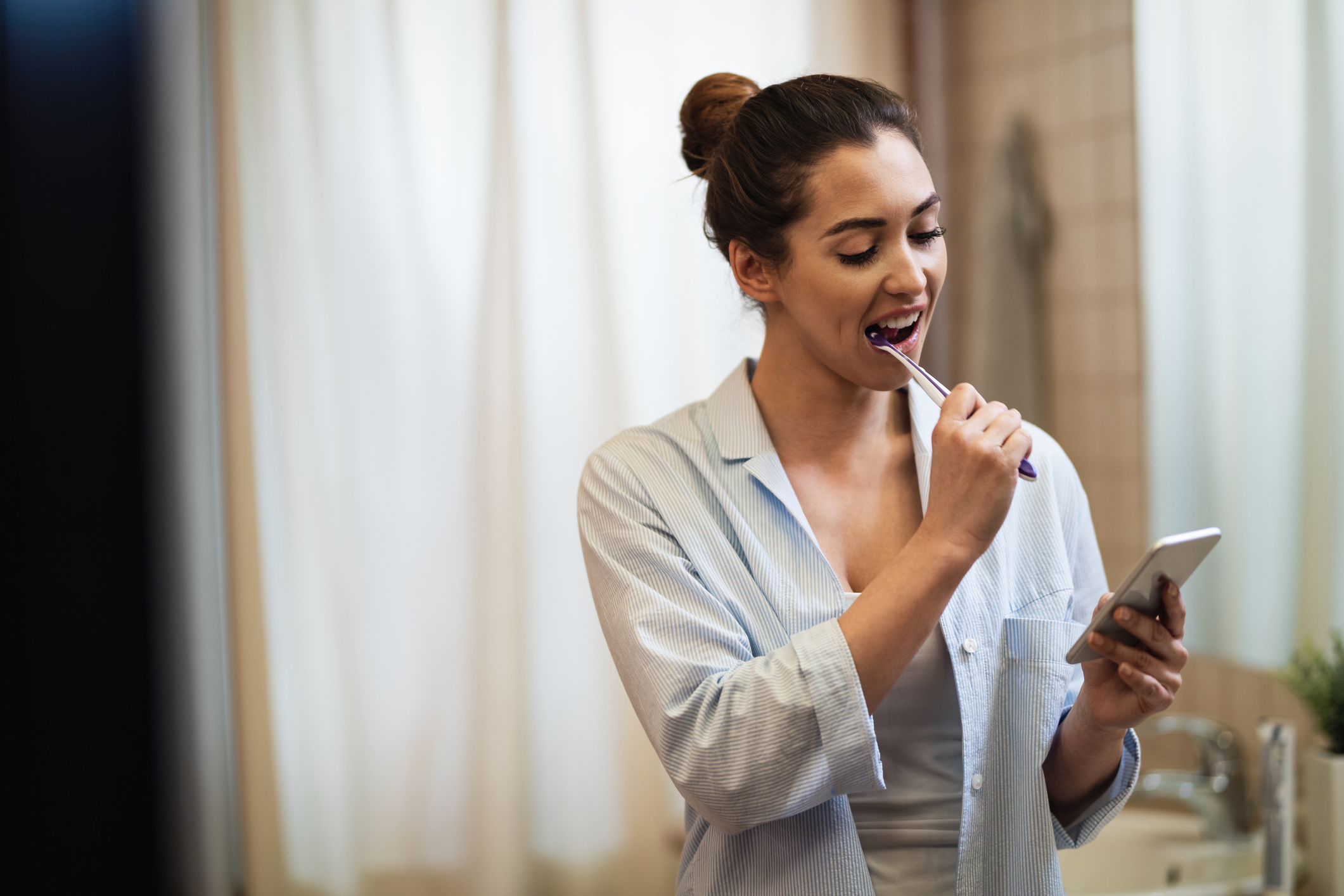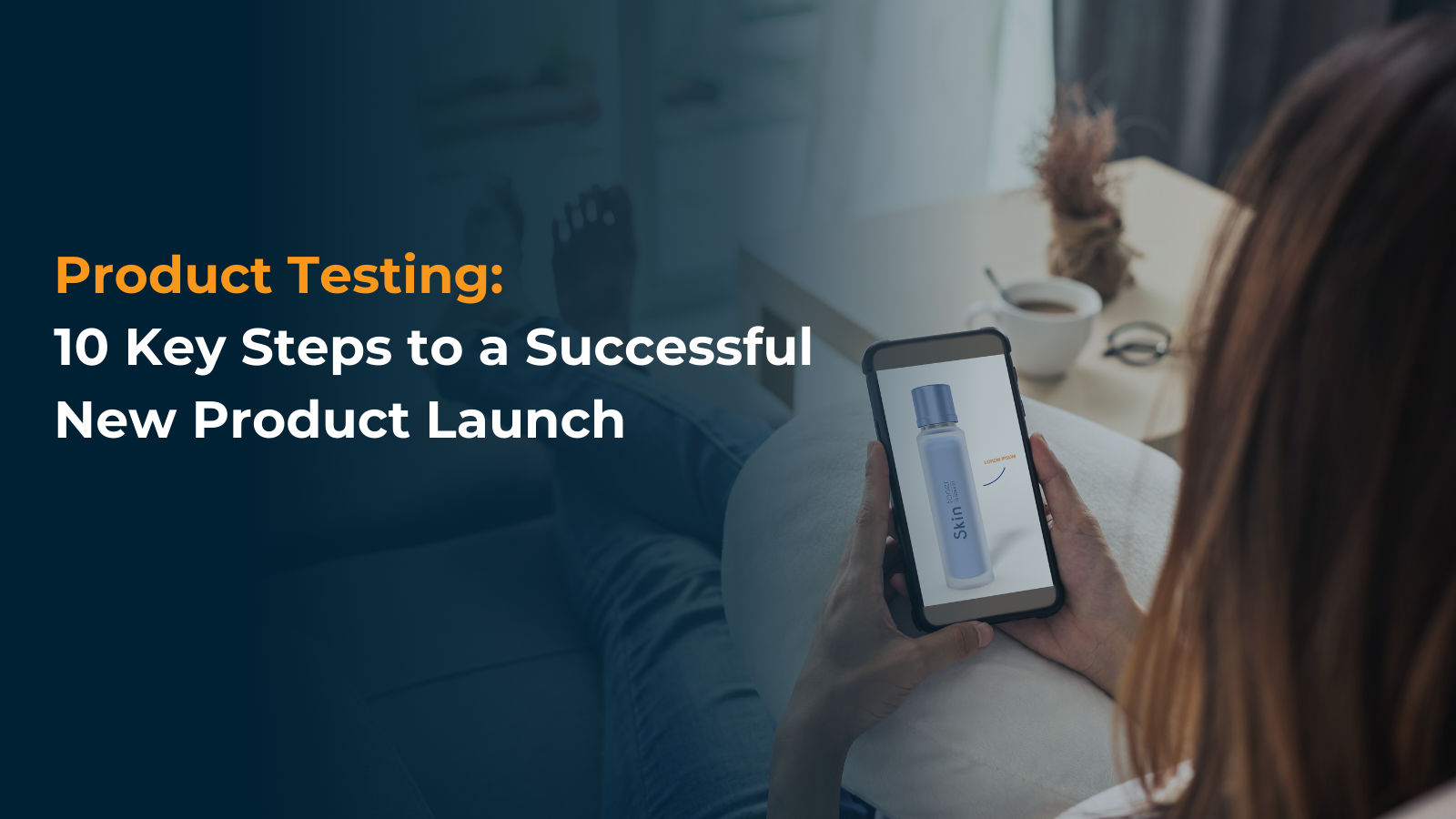20 Questions (and Answers!) About Product Testing

There’s so much to know about product testing. What’s it all about? What are the various types of product testing—and which one should you use? Who even needs product testing? Where should it be done, and when?
Let’s play a round of 20 questions to help you get a better grasp.
1. What is product testing?
Product testing is the process by which companies assess the design, features, performance, packaging, marketing, pricing, or other aspects of their products by asking real people what they think. Product testing may focus on:
- Asking participants for their qualitative feedback. Do they like the product’s scent? Does the product function well?
- Gathering quantitative data as participants engage with the product. How much of the product do participants dispense at a time? How does the shape of the bottle influence the amount used?
Product testing may be conducted in a central location like a research office or participants’ homes. (More on this later.)
2. Who should consider using product testing?
Product testing offers valuable lessons for any product category, including consumer packaged goods (CPG) such as food and beverage products, cleaning or laundry supplies, or beauty products, as well as durable goods like appliances, furniture, or décor.
3. What can a company learn from product testing?
Let’s say, for the sake of example, that you have a team working on a product launch for a new dish soap. Ideally, you wouldn’t put that dish soap on store shelves until you knew the answer to a whole host of questions, such as:
- How well does this formula work to clean dishes under real-world circumstances?
- Do people find the soap’s color and scent appealing?
- Do people like the packaging and on-package messaging?
- Would your test subjects buy this dish soap?
- How much would they pay for it?
4. Do you have to do product testing?
Nobody’s going to force you to do product testing (well, your boss might—but if you’re the boss, you get to decide). Plenty of companies used to make changes to their products on the fly and wait to see how consumers respond. But companies have come to realize that they don’t know what they don’t know—so it helps to get detailed input from consumers prior to launch.
After all, if you were about to get married in front of your friends and family (and a professional photographer), wouldn’t you think about your outfit ahead of time? You’d want to be sure your dress or suit (or your Hawaiian shirt and board shorts; we’re not here to judge) fit well, flattered you from every angle, and looked good in photos. Product research is your fit check: your first opportunity to see how your new SKU performs “out in the wild” among consumers. It lets you know what consumers like and don’t like about a product before you parade it out for real.
5. What are the benefits of product testing?
With the information you’ll gather from a well-designed at home product testing strategy, you’ll be able to:
- Save time because you’ll quickly identify the most marketable products or changes
- Save money by not over-investing in ideas that aren’t commercially viable
- Increase revenue by increasing your sales
- Boost profits by focusing your spending on the features that matter to consumers
- Boost profits by focusing your spending on the features that matter to consumers
6. How can product testing help your brand?
To build a compelling brand, you need to know who you should be talking to and what that audience cares most about. Product testing can help your company build and maintain its brand by first zeroing in on the right audience for your products. Once you’ve figured out who your people are, you can use product testing to identify which features are most important to that target population. Finally, product testing helps you determine which messages or marketing approaches will be most compelling, so you can attract more customers and build customer trust and loyalty.
7. Who’s testing these products?
Companies recruit everyday consumers—real people, in other words—to test products. They may assemble their own panels of testers or they might use a market research company to source test participants. Either way, though, participants should be both representative of the company’s target audience and diverse, to ensure that the results are broadly applicable across the company’s potential market.
8. What are the different types of product testing?
Product testing can generally be characterized based on the following:
- The type of data collected, whether it’s qualitative, quantitative, or a blend
- The characteristic being tested, such as a new or enhanced feature, a flavor or sensory trait of the product, or an aesthetic or functional aspect of its packaging
- The stage of product development it targets, from an early-stage concept test or prototype evaluation to later-stage usability or A/B testing
- The location where products are tested, which may be a centralized location like a research office or in individual consumers’ homes
9. What does quantitative product testing measure?
In a quantitative product test, researchers will look at hard data, traditionally, participants’ responses to specific, close-ended questions about the product. Examples of these questions include: “Are you more likely to purchase Option A or Option B?” “How many times a day did you pick up a bottle of air freshener?” “What price would you pay for this product?”
10. What does qualitative product testing measure?
Qualitative product tests explore subjective information: testers’ opinions about products and their features. How would they describe the taste and texture of your cookie? Does this lunch box appear to be durable and functional? Were they satisfied with a bathroom cleaning product’s results?
In qualitative product tests, participants will answer questions or provide feedback about what they liked, what they didn’t like, and why.
11. Do you need to conduct both quantitative and qualitative product tests?
It’s usually a good idea to incorporate both quantitative and qualitative assessments into your overall study design. These approaches tend to complement one another: quantitative data tells you what people did with your product, while qualitative data lets you explore why they did what they did.
12. How do sensory tests work?
Our reactions to products are largely driven by our senses—sight, smell, taste (where relevant), and touch. Sensory testing asks participants to pay attention to those sensory experiences and describe them. Did the product look appetizing? Was the aroma tempting? Did it have a pleasant texture? Companies can use this information to boost the appeal of their products.
13. What other features can you test with product testing?
Product testing isn’t limited to just testing the formula or design of a product. Companies can also use product tests to evaluate a product’s:
- Packaging: Is the product easy to open? Easy to hold or dispense? Is it eye-catching and attractive on the shelf?
- Labeling: Does the product label clearly and accurately describe the product? Are the on-package instructions easy to read?
- Marketing: Is the advertising slogan or campaign compelling? Is it catchy or memorable?
14. When should you test products?
Companies can—and probably should—test their products throughout the product development process. Early on, companies need to know which products or concepts are promising and which are duds. As the product develops, further product testing reveals which features are just right and which aren’t quite there yet.
But you don’t have to stop there! While new product testing is common, even long-running products benefit from periodic testing to ensure that they don’t become stale or outdated.
Maybe your product doesn’t stand out on the shelves anymore because there are too many new copycat products; you’d like to refresh the color of your floor cleaner or change the shape of your shampoo bottle to freshen up your product’s appearance. Maybe you’re trying to reduce the amount of plastic you use, so you’re redesigning your soda bottles—but you still want them to be comfortable to hold. Or maybe you’d like to tweak the formulation of your cookies to offer a lower-sugar version.
15. Where can you conduct product tests?
There are two primary options for where to conduct product tests.
Central location testing (CLT) takes place in a central, carefully controlled space such as a research office or conference room. While researchers can use CLT to eliminate variables in testing, that’s not necessarily an advantage. In fact, companies need to understand how their products perform in real-life scenarios where those variables aren’t controlled.
That’s why researchers often turn to at home product testing, where product testers use a product in their own homes.
16. What are the advantages of in-home product tests?
In-home product tests, also known as in-home usage tests or IHUTs, show researchers how real consumers use products in their natural environment. This removes the artificial nature of focus groups or research office testing protocols.
IHUTs are also flexible and adaptable. Researchers can:
- Track quantitative usage data as testers consume products throughout an ordinary day
- Collect qualitative video feedback to explore participants’ subjective impressions and opinions
- Combine both approaches to fully assess how people use products
17. Should you enlist a vendor to help you with your product testing?
If you’re finding the details and logistics behind designing and launching your product test overwhelming, it’s worthwhile to enlist a research partner to keep you up to speed on best practices and fill in the gaps for you. You may find it beneficial for a partner to take on the heavy lifting of recruiting consumers for at-home testing, distributing products, and collecting feedback – pro tip: QualSights has a team of research experts that can design your research, synthesize the key findings, prepare detailed reports, and lead cross-functional report share outs.
18. Do you need fancy technology for in-home product testing?
You can go as low-tech or as high-tech as you want with at-home product testing—but your testers are likely to have a better time, and you’re likely to get better results, with a modern product testing platform. Let’s consider three different scenarios to illustrate why that is.
- No tech: in-home product tests followed by phone interviews. To minimize your use of tech, you send your product to testers for at-home use and collect feedback through phone interviews after the test period. In this scenario, you’re limiting the value of your results by relying on participants’ recollections. You’re not hearing about their real, unfiltered reactions as they occur; you’re only hearing what they remember a week or two later.
- Some tech: in-home product tests with concurrent text reporting. This time, you add some technology, asking product testers to send you a text (or enter text in an online form) every time they use your product. This eliminates the recall bias from the first scenario, but it’s a pain in the neck for participants. You’re also still collecting limited information; participants will likely forget to text occasionally and they won’t say as much about their experience when they have to type it out line by line.
- High tech: dedicated product testing technology. In this scenario, you send your product to participants and you onboard them with a user-friendly product testing app that collects video from the tester’s mobile phone. Now, you can see and hear testers as they interact with your product, either live or through a video recording. You’re also likely to hear more rich and nuanced detail, because speech is more natural for most of us than typing.
But wait, there’s more!
Remember how we said it’s a good idea to pair qualitative and quantitative data? Today’s best-in-class product testing technology lets you do that, with QualSights’ first-of-its-kind Smart Sensors that passively collect quantitative data as products are used. You can see exactly when, how often, and how much a product is used, all in the tester’s own home. This passively collected data bridges the gaps that arise due to recall or self-reporting of usage, enabling you to precisely collect in-the-moment usage insights – we can even trigger questions for collecting feedback via surveys and videos immediately after a product is used. Smart Sensors also seamlessly pair with our user-friendly Participant App to help you understand the how and why behind product usage via consumer videos of unlimited length. Through our app, we can also proactively send participants reminders to complete project activities, ensuring compliance throughout every stage.
19. Any tips for how to test a product?
Bear in mind that the point of product testing is to understand how testers interact with products in a real-world situation. The closer you can get to that ideal, the better the information you’ll collect.
With that said, think about which aspect of your product you want to test and what questions you want to answer. If you have a fairly narrow question—for example, which shampoo bottle shape is more aesthetically pleasing or easier to hold—you may be able to fully answer that question with a single focus group in a central location test. If, on the other hand, you’re more interested in what consumers actually do with that bottle, letting them organically use it at home for a week or two will probably yield more, and better, information.
20. How can you get started with in-home product testing?
If you want to know more about how to test a product, check out our blog on the 10 steps to a successful new product launch.
When you’re ready to get started with product testing, turn to QualSights. Our proprietary always-on, always-connected Smart Sensors collect precise, accurate quantitative data each time study participants interact with a product. These sensors give researchers real-time data about how real people use products under natural conditions. And our intuitive, award-winning mobile qualitative video platform lets you explore the emotions and thoughts driving those behaviors.
QualSights has the market research tools and expertise you need to answer any question. Contact us today to learn more.
 Product Testing
Product Testing 

